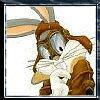-
Posts
474 -
Joined
-
Last visited
-
Days Won
1
Trurl's Achievements

Molecule (6/13)
5
Reputation
Single Status Update
-
Say you kick someone, and you want to know how hard you are going to hit them. You figure if you increase the mass behind your kick so it will hurt more. But you could also increase the velocity of the kick so that force equals mass times acceleration.
But this relationship would not be linear. So, you make a graph depicting the force as opposed to velocity. The graph would be curved to say the least and it would not be one to one or in that case uniform.
The graph would also be difficult to analyze. You could graph one mass against a variable velocity. (Or a fixed velocity over mass) But if there was a pattern for this equation it would be difficult to see. You have the equation but no way to determine what way is better to kick (by increasing velocity or mass or both). Sure, you can figure it out for a case-by-case basis. But what if you didn’t have a computer and were in a fight and had to rely on intuition?
This is what I got out of the book I read on the Riemann’s hypothesis. Sure, there may be some higher math I don’t understand that may solve the problem. But isn’t this graphing problem the reason we can’t find a pattern in Prime numbers?
I hypothesize, that in order to find a pattern in Primes we must find a simple pattern where they relate other than one equation. Of course, this is easier said than done, and I am not clamming I can do it.
But think of this. If you could prove 2 numbers to equal a semi-Prime. That would prove that both numbers are Prime and would be a Primality test. We could argue the fact of the difficulty of knowing from the beginning a number is a semi-Prime, but for now assume we are looking for patterns in all known semi-Primes.
Would a graph of the “discovered” Prime numbers result in a graphing challenge of the velocity vs mass? Based on values we know that are Prime and semi-Prime, would we not have a random data set to graph and find a pattern if one existed?
It sounds more complicated than it is, but it is a simple hack to find patterns that are not easily graphed.








